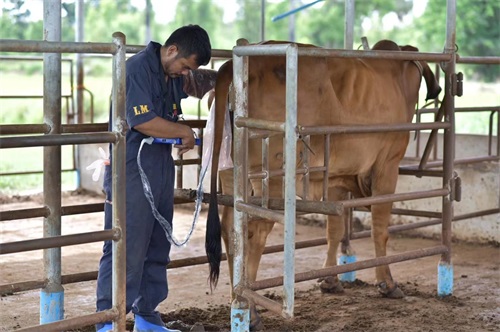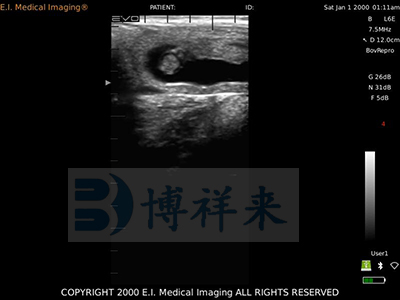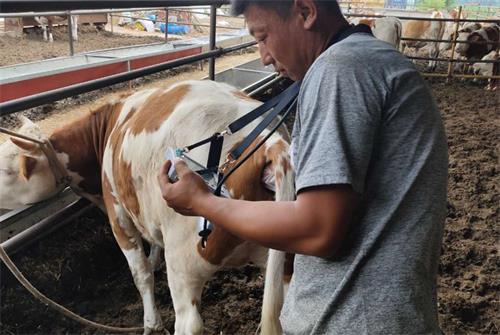En la ganadería moderna, La eficiencia reproductiva juega un papel vital en la rentabilidad general. La detección oportuna y precisa de la preñez es esencial para el manejo eficaz de los rebaños de ganado. One of the most advanced and increasingly adopted tools for this purpose is ultrasound technology. This article explores the role of ultrasound in early pregnancy detection en el ganado vacuno, including its advantages, techniques, best practices, and how it compares with traditional methods.

Why Early Pregnancy Detection Matters
Detecting pregnancy in its early stages offers several key benefits to cattle producers:
-
Identifies open (non-pregnant) cows early, allowing for re-breeding or culling decisions.
-
Reduces days open, which increases herd fertility and productivity.
-
Allows for better nutritional and veterinary management for pregnant animals.
-
Supports record-keeping and genetic improvement programs.
Traditionally, pregnancy detection has been done through rectal palpation or blood tests. While these methods still hold value, ultrasound has emerged as a highly accurate, non-invasive, and information-rich alternative.
How Ultrasound Works in Cattle Reproduction
Ultrasound machines used in bovine practice typically consist of a transducer (sonda), a display unit, and software capable of producing real-time images. The probe emits high-frequency sound waves that penetrate the tissues. As these waves bounce off structures of varying densities (like the uterus or a developing embryo), they are collected and converted into grayscale images.
Veterinarians or trained technicians perform the ultrasound exam by inserting the probe rectally to scan the uterus. With proper training, early pregnancy can be detected as early as 26 Para 30 days post-breeding.
Advantages of Ultrasound Over Traditional Methods
-
Earlier Detection: Ultrasound can identify pregnancies as early as 26 days post-insemination, while rectal palpation is generally limited to 35-45 Días.
-
Visual Confirmation: Unlike palpation, ultrasound provides a real-time visual image, reducing the chances of false negatives or misdiagnosis.
-
Fetal Aging and Viability: Ultrasound allows the operator to estimate fetal age, detect multiple fetuses (twins), and assess fetal heartbeat — none of which are possible with palpation alone.
-
Non-invasive and Safer: With proper handling, ultrasound is less physically stressful for the animal and reduces the risk of causing miscarriage compared to manual palpation.
-
Record-Keeping and Breeding Management: Digital ultrasound machines often allow images to be saved or exported for herd management software, improving documentation and traceability.

Ultrasound image of a 34-day-old fetus
When to Perform an Ultrasound Examination
The ideal window for early pregnancy diagnosis using ultrasound is between 28 y 35 days post-breeding. En esta etapa, the embryonic vesicle and heartbeat can typically be visualized clearly.
Some herds may benefit from a second check around 60–90 days to confirm fetal development and monitor for embryonic loss, which can occur during early gestation.
Types of Ultrasound Equipment Used in Cattle
Ultrasound machines suitable for cattle vary in design and price. The most commonly used types include:
-
Portable Bovine Ultrasound Units: These compact, battery-powered systems are ideal for field conditions. They often come with waterproof probes and wearable displays, such as head-mounted goggles or wrist monitors.
-
Console Systems: Larger and more expensive, these systems offer higher image resolution and are generally used in veterinary clinics or research settings.
-
Wireless and Smartphone-Compatible Probes: The latest innovations include probes that connect wirelessly to smartphones or tablets, enabling easy sharing of images and telemedicine consultations.
Training and Operator Skill
Accurate interpretation of ultrasound images requires training and experience. Misinterpretation can lead to incorrect diagnoses and poor management decisions. Many veterinary schools now include ultrasound training in their large-animal reproduction curricula, and there are also short courses available for producers and technicians.
Important aspects of training include:
-
Recognizing the normal anatomy of the uterus and ovaries.
-
Identifying the gestational sac, embrión, and fetal heartbeat.
-
Distinguishing between pregnancy and uterine abnormalities, such as pyometra or cysts.
Challenges and Limitations
While ultrasound is highly beneficial, it does come with certain limitations:
-
Equipment Cost: Good-quality bovine ultrasound machines can be a significant investment, though they often pay for themselves in increased reproductive efficiency.
-
Learning Curve: Proper use requires time and practice to master.
-
Availability of Trained Personnel: In some areas, there may be a shortage of experienced operators.
Despite these challenges, many producers find that the benefits outweigh the drawbacks, especially when ultrasound becomes part of a regular herd health program.
Economic Impact on the Farm
A missed heat cycle can cost a dairy farm $2 Para $5 per day per open cow due to lost milk production and delayed calving. By identifying open cows early, ultrasound helps reduce these costs substantially. In beef operations, tight breeding and calving windows are critical for producing uniform calf crops, and early pregnancy diagnosis plays a vital role in achieving that.
Case Study: A Real-World Example
A 500-head dairy farm in Wisconsin implemented routine ultrasound scanning at 30 y 60 days post-insemination. Sobre 12 Meses, they observed the following:
-
Pregnancy rate increased by 8%
-
Average days open decreased by 11 Días
-
Improved detection of twins, allowing for better calving management
-
Net profit increased due to fewer non-productive days and better herd turnover

Best Practices for On-Farm Ultrasound Use
-
Always restrain the animal securely to avoid injury to both cow and operator.
-
Sanitize equipment between uses to prevent cross-contamination.
-
Maintain accurate breeding and calving records to correlate with ultrasound findings.
-
Use ultrasound as part of a broader reproductive management plan alongside synchronization protocols and veterinary consultation.
Future of Ultrasound in Livestock Production
As technology evolves, ultrasound machines are becoming more affordable, compact, and user-friendly. Future developments may include AI-assisted image interpretation and integration with cloud-based herd management software. These innovations could make ultrasound accessible even to small-scale producers worldwide.
Conclusión
Ultrasound is revolutionizing reproductive management in cattle by offering fast, accurate, and detailed pregnancy detection. From early diagnosis and fetal viability assessment to enhanced herd management, the technology brings tangible benefits to both dairy and beef operations. While an investment in training and equipment is necessary, the long-term gains in productivity and profitability make ultrasound a valuable tool for the modern livestock producer.